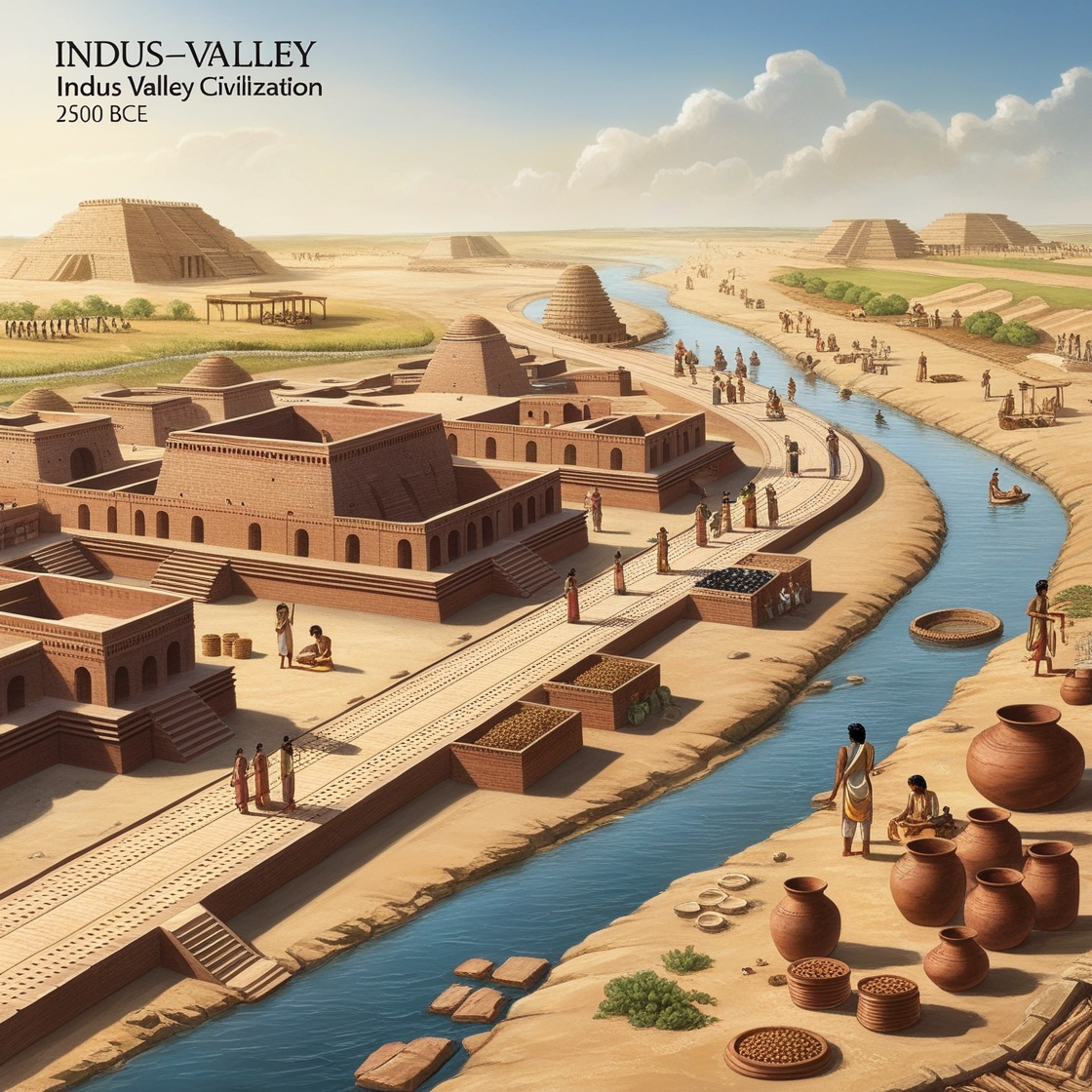Table of Contents
Introduction to the disappearance of the Indus Valley Civilization
The Indus Valley Civilization (IVC) was one of the earliest advanced societies in the world, thriving around 2500 BCE in what is now Pakistan and northwest India. This civilization was famous for its well-planned cities like Mohenjo-Daro and Harappa, advanced drainage systems, and rich culture. But by around 1900 BCE, many of these cities were abandoned.
This raises an important question: What led to the disappearance of the Indus Valley Civilization?
In this blog post, we will explore different theories about why this great civilization declined. We will look at climate change, river changes, economic problems, social issues, and possible invasions from outside groups. Let’s dive in!
1. Climate Change
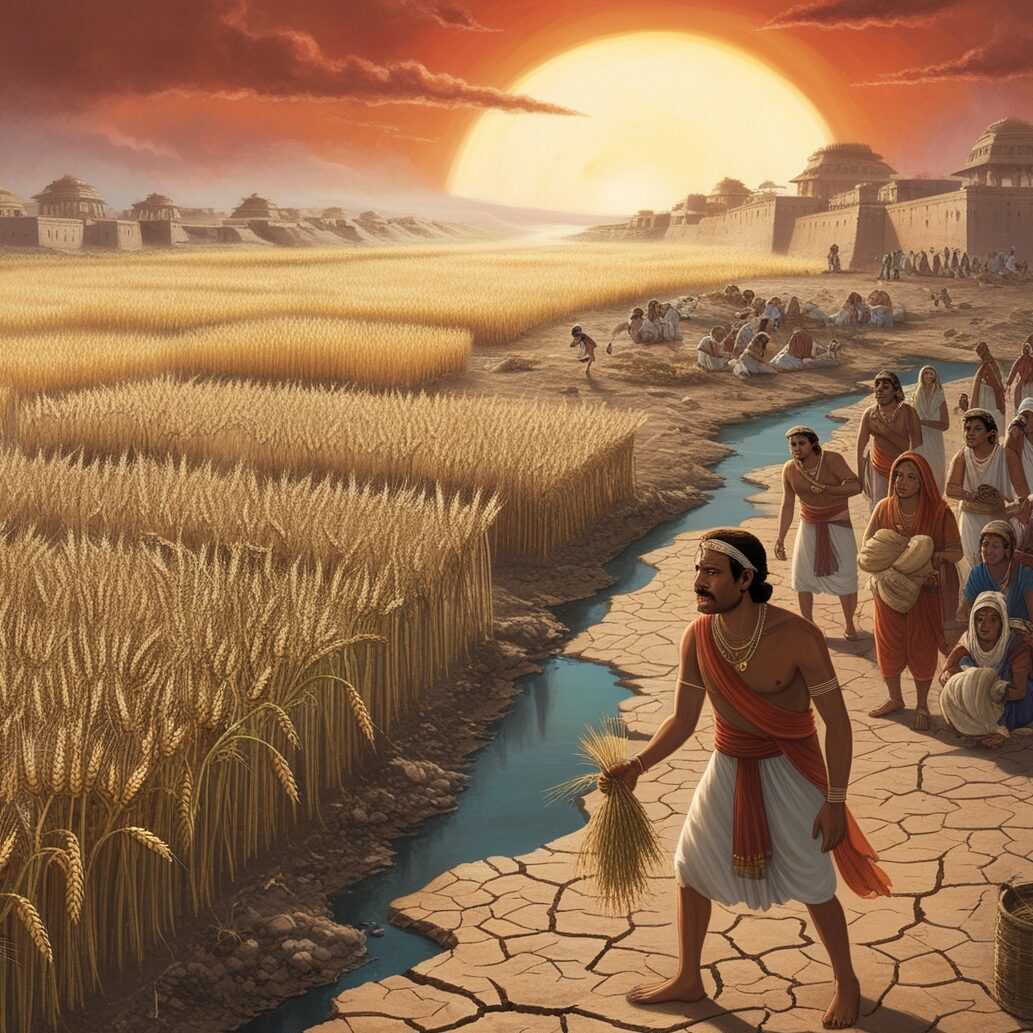
One of the main theories for the decline of the Indus Valley Civilization is climate change. The people of this civilization relied heavily on seasonal monsoon rains for farming.
1.1 Monsoon Patterns
The Indus Valley depended on the monsoon rains that usually came in June and continued through September. These rains were essential for growing crops like wheat, barley, and cotton.
- Less Rainfall: If the rainfall decreased, crops would not grow well, leading to food shortages. Scientists have found evidence that around 2200 BCE, the region experienced a significant drop in rainfall.
- Famine and Migration: Without enough food, people would have to leave their homes to find better places to live. As families moved away, cities would gradually empty out.
1.2 Temperature Increases
Higher temperatures can also hurt agriculture. If temperatures rose, it could increase evaporation, making water even scarcer.
- Heat Stress on Crops: Crops can only grow under certain temperature conditions. If it became too hot for too long, crops might fail, leading to even more food shortages.
2. Changes in River Systems
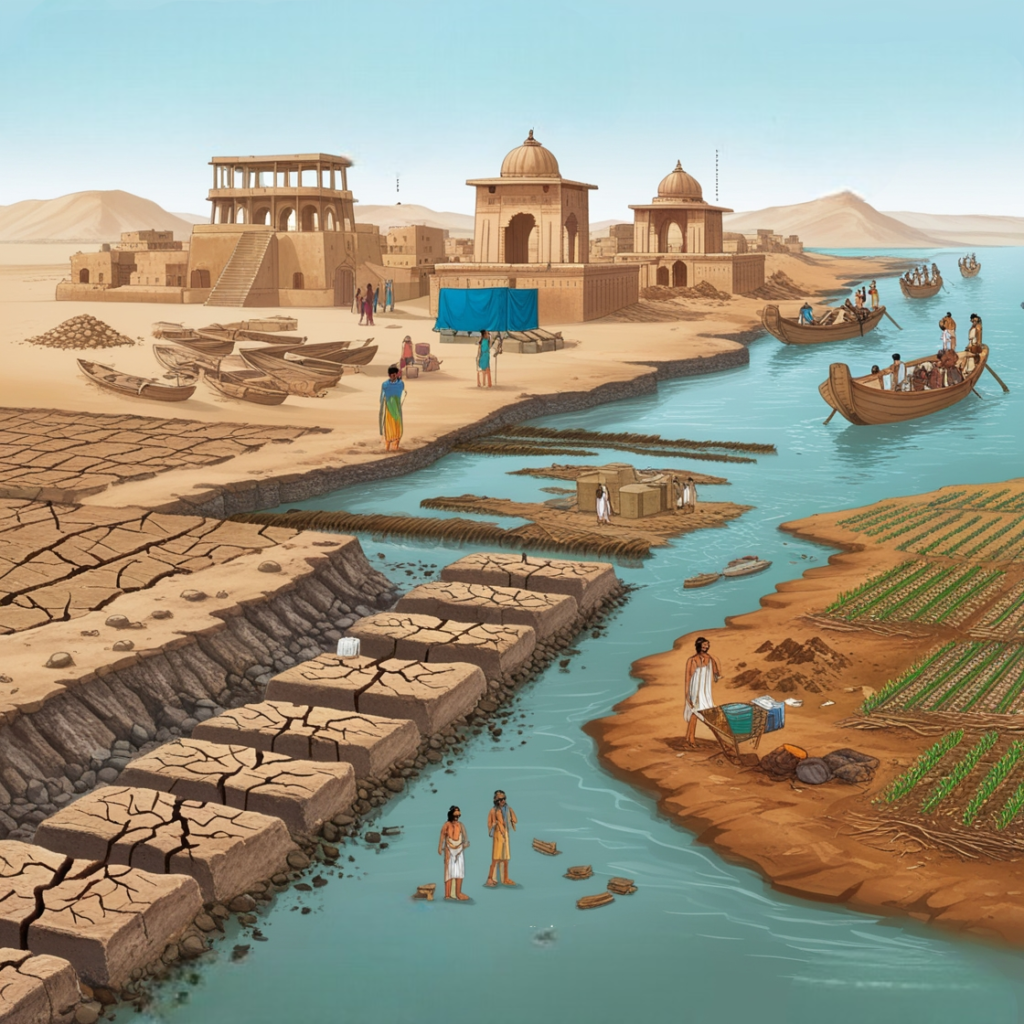
The Indus River and its tributaries were crucial for the civilization’s survival. The river provided water for drinking, farming, and trade. However, changes in the river’s flow could have had serious effects.
2.1 Shifts in River Flow
Research shows that the Indus River might have changed its course due to natural processes.
- Irrigation Problems: The civilization built complex irrigation systems to water their fields. If the river changed its path, these systems would no longer work, making it hard to grow food.
- Urban Centers Affected: Cities like Mohenjo-Daro and Harappa relied on the river for trade and daily life. If the river moved away, it could lead to reduced trade and more difficulties in maintaining urban life.
2.2 Flooding Risks
Flooding also posed a serious threat to the Indus Valley Civilization.
- Destructive Floods: Heavy rains could cause the river to flood, destroying homes and farmland. Archaeological evidence suggests that the civilization faced risks from both drought and flooding.
- Displacement of Communities: Flooding could force people to leave their homes and migrate elsewhere, contributing to the decline of cities.
3. Economic Decline
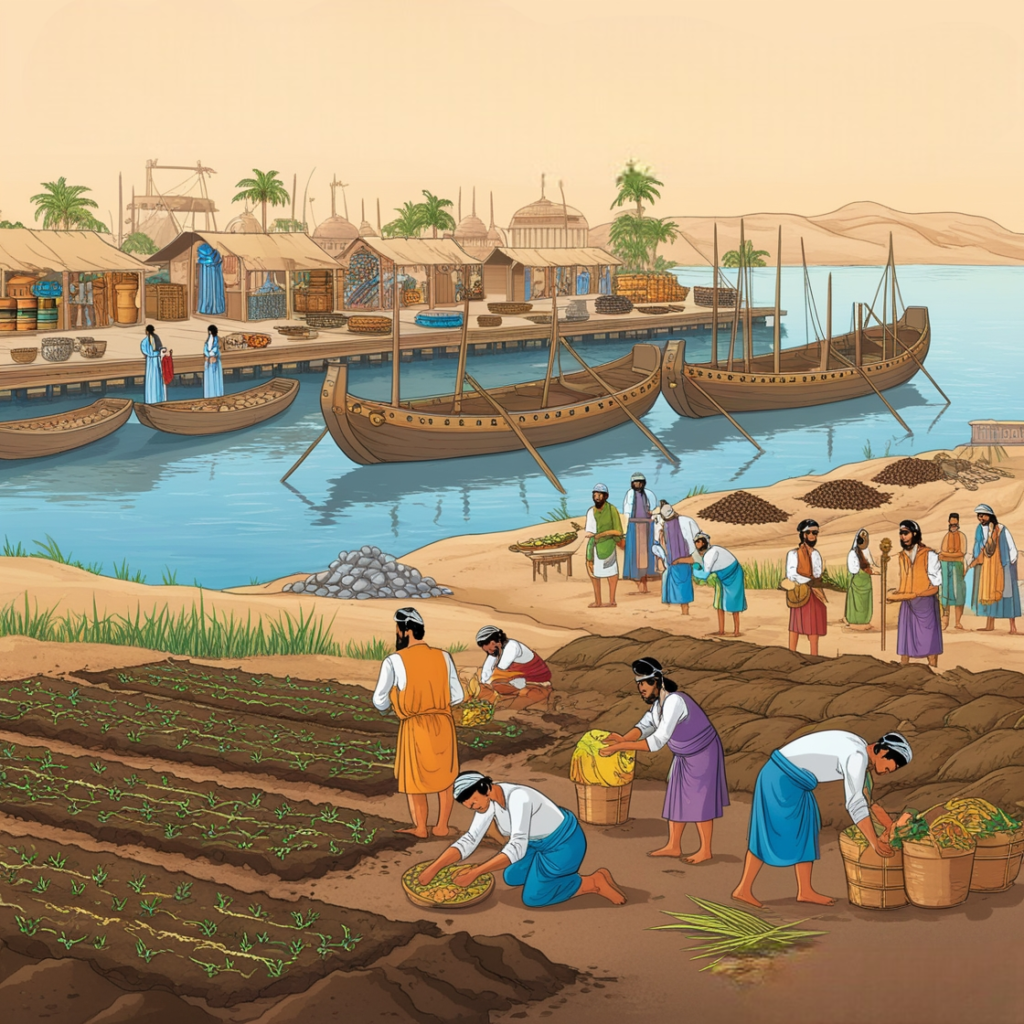
The economy of the Indus Valley Civilization was based on farming, trade, and craftsmanship. Problems in these areas could have serious consequences.
3.1 Disruptions in Trade
The Indus Valley Civilization was part of a large trade network, exchanging goods with places like Mesopotamia.
- Loss of Trade Routes: If trade routes were disrupted due to climate issues or conflicts, it would hurt their economy. Without access to necessary goods, communities would struggle to survive.
- Decline in Specialization: Many artisans created goods for trade. If trade declined, there would be less demand for their products, leading to economic hardships.
3.2 Resource Depletion
Over time, intensive farming can deplete resources like soil nutrients.
- Soil Degradation: Continuous farming without proper land care can exhaust soil fertility, leading to poor crop yields. This could result in food shortages and economic decline.
- Food Shortages: As crops failed, food would become scarce, leading to social unrest and pushing people to migrate to find better resources.
4. Social and Political Issues
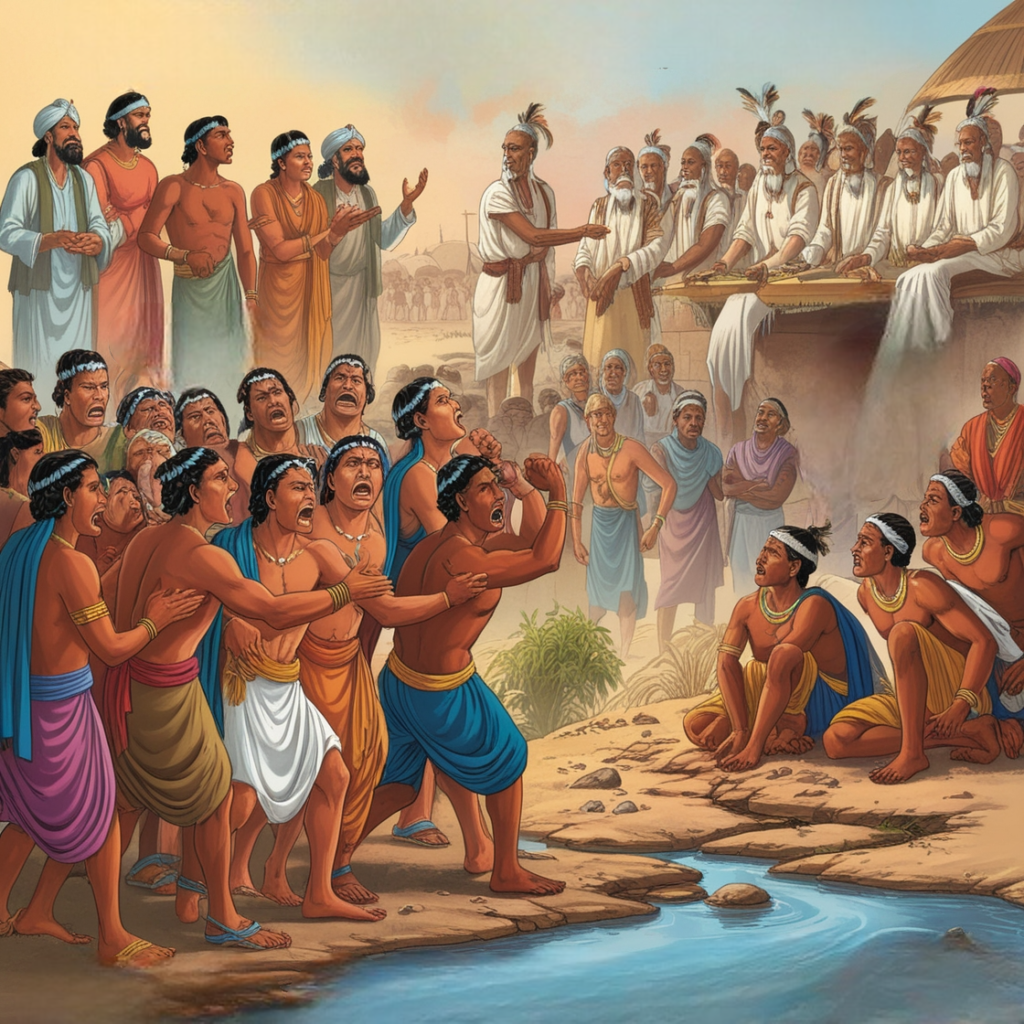
Internal social dynamics and political structures may also have contributed to the decline of the Indus Valley Civilization.
4.1 Internal Conflicts
As resources became scarcer, tensions within communities could rise.
- Resource Scarcity: Competition for land and water could lead to conflicts. Disputes over resources might weaken the unity of the communities.
- Fragmentation of Society: If communities started to fight instead of working together, it would be harder to solve larger issues like climate change or economic problems.
4.2 Weak Leadership
Strong leadership is crucial during tough times. If leaders failed to manage challenges, chaos could follow.
- Inability to Adapt: If leaders did not find ways to deal with changing conditions like food shortages, people might lose trust in them, leading to unrest.
- Crisis Management Failures: In difficult times, effective decision-making is essential. If leaders could not manage resources wisely or resolve conflicts, communities would become vulnerable.
5. External Pressures and Invasions
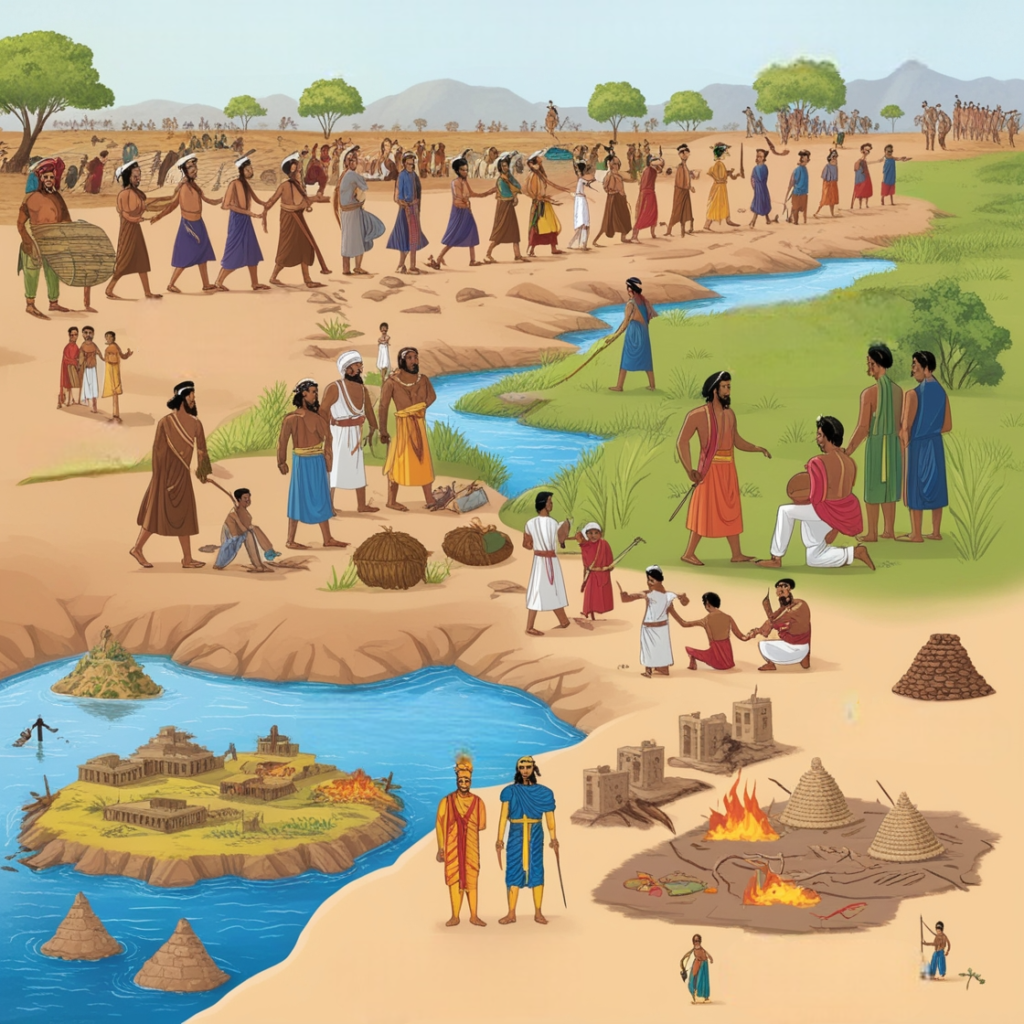
While there isn’t much clear evidence of invasions, some theories suggest that outside forces could have influenced the decline.
5.1 Migration of New Groups
As neighboring groups expanded, they may have increased competition for resources.
- Increased Competition: New groups arriving in the area could have fought for fertile land and water, leading to conflicts and pushing original inhabitants out.
- Cultural Assimilation: As these new groups settled, they might have mixed with the Indus Valley people, leading to a gradual loss of their distinct culture.
5.2 Potential Invasions
Though evidence is limited, some historians think invasions could have played a role in the decline.
- Signs of Violence: Some archaeological findings suggest signs of destruction in certain areas, indicating that outside pressures may have contributed to the civilization’s decline.
- Cultural Overlap: If invaders brought new customs and practices, they might have diluted the unique characteristics of the Indus Valley Civilization, leading to its gradual fading.
6. Cultural Aspects and Their Role in Decline

The culture of the Indus Valley Civilization also played a significant role in its sustainability and decline.
6.1 Religion and Beliefs
Religious beliefs often unite societies. If these beliefs changed or were challenged, it could have serious effects.
- Crisis of Faith: Natural disasters or social problems might have caused people to question their beliefs. This crisis could lead to social unrest as communities struggled to understand their suffering.
- Decline of Cultural Practices: As people migrated or settled elsewhere, traditional customs and beliefs might fade, weakening the cultural identity of the civilization.
6.2 Technological Innovations
Technological advancements are crucial for societal development. If the Indus Valley Civilization failed to innovate, it could hurt its survival.
- Failure to Innovate: The civilization was known for its advanced engineering and urban planning. Without new ideas to address challenges, society would struggle to adapt.
- Comparison with Neighboring Cultures: If neighboring cultures advanced faster, the Indus Valley Civilization might have found it harder to compete, leading to economic and social problems.
Conclusion
The disappearance of the Indus Valley Civilization is a complex issue that likely resulted from a mix of internal and external factors. Climate change, shifts in river systems, economic troubles, social issues, and possible external pressures all played significant roles. By studying these factors, we not only learn about this remarkable society but also gain important lessons about sustainability and resilience that are relevant today.
